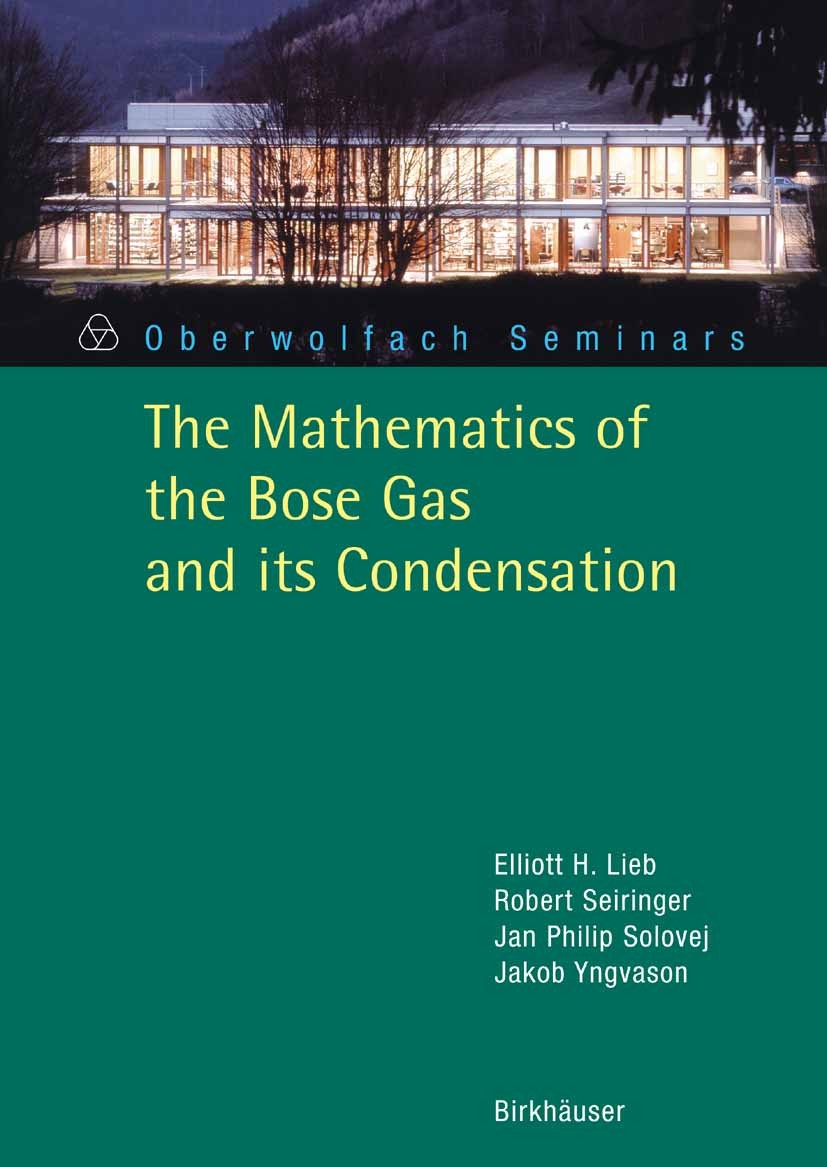| 书目名称 | The Mathematics of the Bose Gas and its Condensation |
| 编辑 | Elliott H. Lieb,Jan Philip Solovej,Jakob Yngvason |
| 视频video | http://file.papertrans.cn/914/913789/913789.mp4 |
| 概述 | The only available summary of its kind.Written with attention to pedagogical detail.No book that covers these topics on this mathematical level.Includes supplementary material: |
| 丛书名称 | Oberwolfach Seminars |
| 图书封面 |  |
| 描述 | The mathematical study of the Bose gas goes back to the ?rst quarter of the twentieth century, with the invention of quantum mechanics. The name refers to the Indian physicist S.N. Bose who realized in 1924 that the statistics governing photons(essentiallyinventedbyMaxPlanckin1900)isdetermined(usingmodern terminology) by restricting the physical Hilbert space to be the symmetric tensor product of single photon states. Shortly afterwards, Einstein applied this idea to massive particles, such as a gas of atoms, and discovered the phenomenon that we now call Bose-Einstein condensation. At that time this was viewed as a mathematical curiosity with little experimental interest, however. The peculiar properties of liquid Helium (?rst lique?ed by Kammerlingh Onnes in 1908) were eventually viewed as an experimental realization of Bose- Einstein statistics applied to Helium atoms. The unresolved mathematical pr- lem was that the atoms in liquid Helium are far from the kind of non-interacting particles envisaged in Einstein’s theory, and the question that needed to be - solved was whether Bose-Einstein condensation really takes place in a strongly interacting system — or even in a weakly int |
| 出版日期 | Textbook 2005 |
| 关键词 | Bose Gas; Bose-Einstein Condensation; Helium-Atom-Streuung; Mathematical Physics; PAS; PED; Phase Transiti |
| 版次 | 1 |
| doi | https://doi.org/10.1007/b137508 |
| isbn_softcover | 978-3-7643-7336-8 |
| isbn_ebook | 978-3-7643-7337-5Series ISSN 1661-237X Series E-ISSN 2296-5041 |
| issn_series | 1661-237X |
| copyright | Birkhäuser Basel 2005 |
 |Archiver|手机版|小黑屋|
派博传思国际
( 京公网安备110108008328)
GMT+8, 2025-11-11 15:12
|Archiver|手机版|小黑屋|
派博传思国际
( 京公网安备110108008328)
GMT+8, 2025-11-11 15:12


